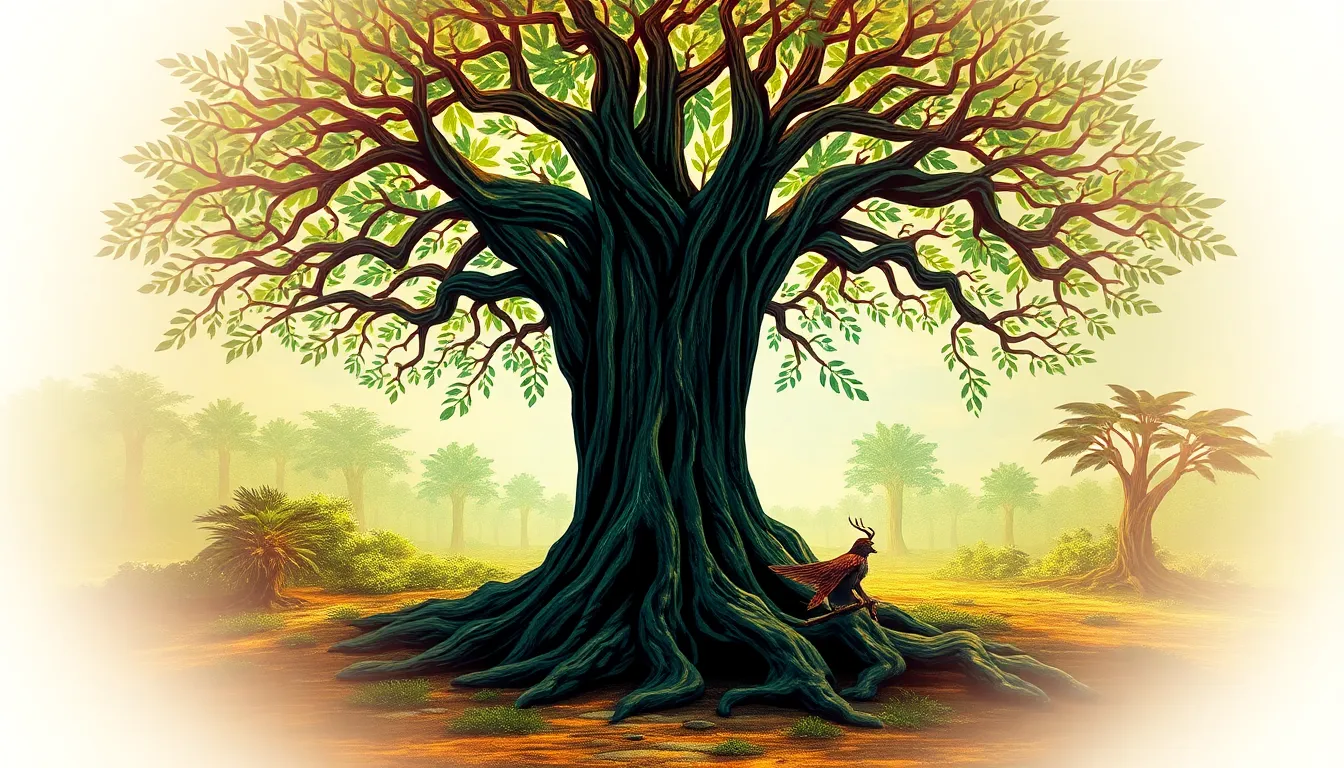The Myth of the Sacred Grove: Nature and Divinity in Egyptian Beliefs
I. Introduction
The ancient Egyptians possessed a profound reverence for the natural world, weaving a complex tapestry of spirituality that intertwined nature and divinity. Their beliefs celebrated the inherent power of nature, viewing it as a manifestation of the divine. Central to these beliefs was the concept of the Sacred Grove, a space where the spiritual and the natural intersected.
This article aims to explore the intersections of nature and divinity in ancient Egyptian spirituality, with a particular focus on the Sacred Grove—its significance, its role in mythology, and its enduring legacy in both ancient and modern contexts.
II. Historical Context of Egyptian Religion
The history of ancient Egyptian civilization spans thousands of years, beginning around 3100 BCE and lasting until the conquest by Alexander the Great in 332 BCE. This civilization was characterized by its remarkable achievements in architecture, art, and governance, but perhaps its most enduring legacy is its complex religious system.
Egyptian religion was polytheistic, featuring a pantheon of gods and goddesses who governed all aspects of life and nature. The Egyptians believed that the divine was present in the natural world, and this belief manifested in various religious practices, rituals, and myths.
Nature played a pivotal role in these beliefs. The Nile River, the desert, and the fertile land were seen as gifts from the gods, and they were integral to the survival of the civilization. The Egyptians revered the cycles of nature, which they believed mirrored the cycles of life, death, and rebirth.
III. The Sacred Grove: Definition and Significance
The Sacred Grove in ancient Egypt referred to areas of trees and vegetation that were considered holy and often associated with specific deities. These groves were not merely places of beauty but were imbued with spiritual significance.
In Egyptian culture, trees and groves were seen as symbols of fertility, growth, and renewal. They were often dedicated to specific gods or used as sites for worship. The most notable trees included the sycamore, willow, and tamarisk, each carrying symbolic meanings:
- Sycamore: Represented protection and nourishment, often linked to the goddess Hathor.
- Willow: Associated with joy and fertility, said to be favored by the goddess Isis.
- Tamarisk: Symbolized endurance and resilience, often linked to the afterlife.
These groves served as sanctuaries for both the divine and the community, where people could connect with the gods through nature.
IV. Deities and Nature: The Divine Connection
Several key deities in Egyptian mythology were closely associated with nature, and their stories often reflected the importance of the natural world:
- Osiris: God of the afterlife and agriculture, Osiris embodied the fertility of the land and the cycle of life and death.
- Isis: Goddess of motherhood and magic, Isis was revered as a protector of nature and a nurturer of life.
- Hathor: Goddess of love, beauty, and fertility, often depicted as a cow or a woman with cow horns, she was associated with the nurturing aspects of nature.
Myths surrounding these deities often included elements of nature, illustrating how the divine presence was found in the world around them. For instance, the story of Osiris’s death and resurrection closely mirrors the agricultural cycle, emphasizing the connection between his divinity and the fertility of the land.
V. Sacred Groves in Egyptian Mythology
Numerous myths in Egyptian mythology involve Sacred Groves, emphasizing their significance in the spiritual landscape of the time. One notable example is the myth of the creation, where the first gods emerged from a primordial mound, often represented through vegetation and sacred trees.
Additionally, Sacred Groves played a crucial role in funerary texts and rituals. They were places where the deceased could connect with the divine, with trees symbolizing the passage to the afterlife. In the “Book of the Dead,” references to groves and trees highlight their importance in ensuring a safe journey for souls.
VI. Archaeological Evidence of Sacred Groves
Archaeological discoveries have unveiled significant insights into the role of Sacred Groves in ancient Egyptian spirituality. Sites such as Karnak and Luxor have revealed evidence of tree worship and sacred spaces dedicated to various deities.
Artifacts such as amulets, carvings, and offerings found in these areas indicate a deep reverence for nature and the belief that the divine could be accessed through these sacred sites. Scholars have analyzed these findings to gain a better understanding of how ancient Egyptians viewed their relationship with nature and the divine.
VII. The Legacy of the Sacred Grove in Modern Context
The influence of ancient Egyptian beliefs persists in contemporary practices and beliefs. Many modern spiritual movements draw inspiration from the reverence for nature seen in ancient Egypt. This connection is particularly relevant in today’s ecological discussions, where the importance of preserving natural spaces is emphasized.
Furthermore, the idea of Sacred Groves has found a place in contemporary environmentalism, as people advocate for the preservation of sacred natural spaces. The concept highlights the ongoing relevance of nature in human beliefs and the need to honor and protect the environment.
VIII. Conclusion
The exploration of the Sacred Grove reveals the profound connections between nature and divinity in ancient Egyptian spirituality. Key points discussed include the cultural significance of Sacred Groves, the divine associations with natural elements, and the enduring legacy of these beliefs in modern contexts.
Ultimately, the myth of the Sacred Grove serves as a reminder of humanity’s enduring relationship with nature and the divine. As we reflect on these ancient beliefs, we recognize their relevance in our contemporary world, where the balance between nature and spirituality remains a vital concern.




